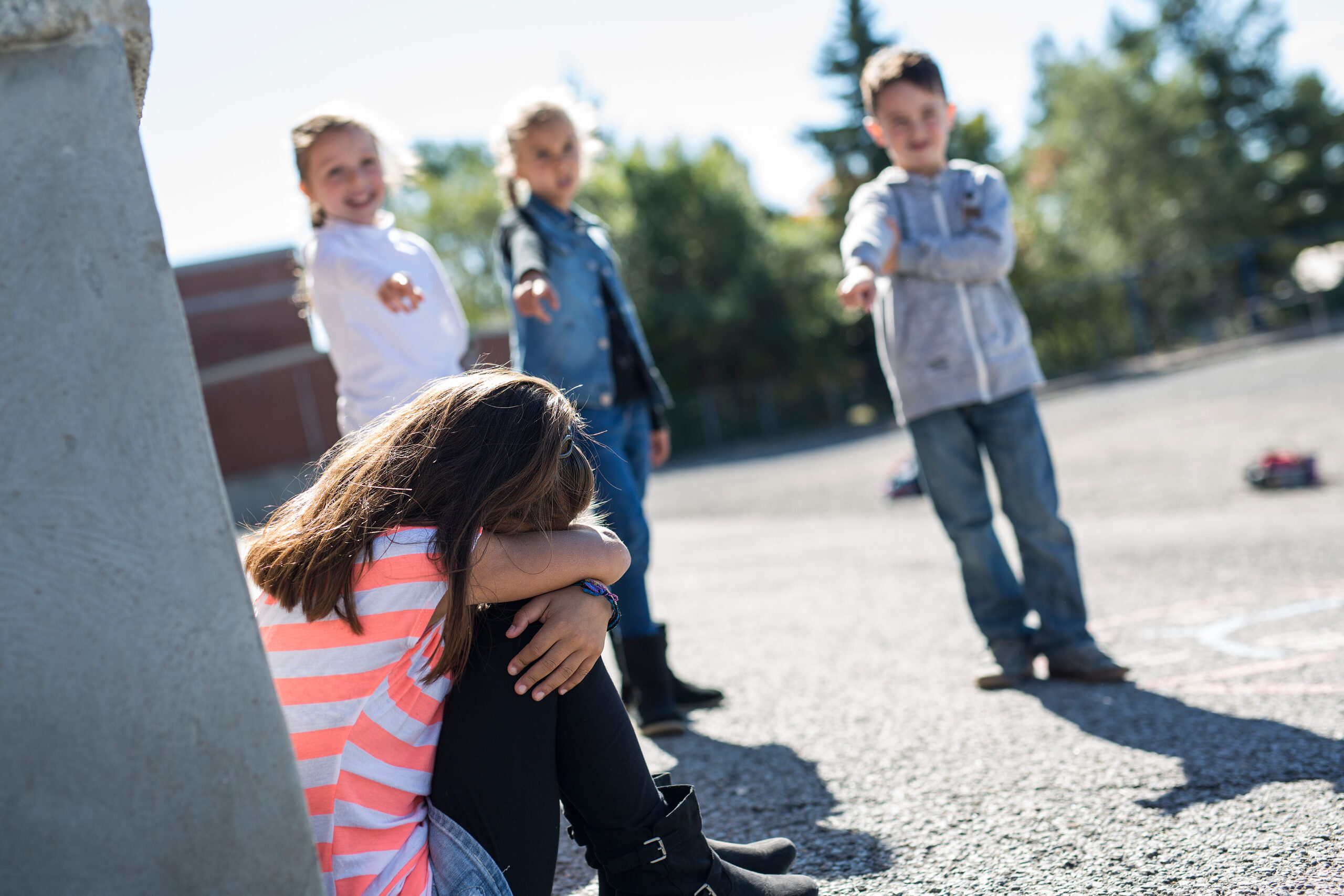
You’re doing your best.
You manage school drop-offs, meetings, dinners, homework, the never-ending to-do list—and somehow still feel like you’re falling short. Your child is intelligent, curious, and full of life. But things aren’t clicking.
Mornings feel like combat. Homework ends in tears. Playdates spiral out of control. Teachers keep flagging “concerns” you can’t quite make sense of.
And in the quiet moments, you wonder…
- “Why is everything such a battle?”
- “Why do other parents seem to have it together?”
- “Is something else going on here?”
ADHD isn’t always loud. It isn’t always bouncing off the walls or blurting out answers. Sometimes, it’s subtle. Quiet. Misunderstood.
It can look like a child who daydreams instead of focusing. One who feels things too deeply. Or one who forgets their bag, jacket, or lunch every single day.
This isn’t about labelling your child. It’s about making sense of the chaos—and seeing the patterns hiding in plain sight.
In this article, we’ll unpack:
- What ADHD actually is (in simple, practical language)
- The three main types of ADHD (and how they show up differently)
- Ten signs that often go unnoticed or get misunderstood
- Real-world examples from families who’ve been there
- And practical next steps—without guilt or overwhelm
Because understanding what’s underneath the behaviour changes everything.
Let’s begin.
What ADHD Actually Is
ADHD stands for Attention-Deficit/Hyperactivity Disorder.
That name can be misleading.
It sounds like a child who can’t pay attention or is hyper all the time—but that’s not always the case. ADHD isn’t about a lack of attention. It’s about inconsistent attention. Sometimes, your child is all-in and focused for hours. Other times, they can’t sit still for five minutes.
ADHD affects how a child’s brain handles:
- Focus and concentration
- Impulse control
- Motivation and memory
- Emotional regulation
- Organisation and follow-through
And it’s not because they’re lazy, defiant, or “just need more discipline.” It’s a brain-wiring difference. That’s it. One that affects how they process the world—and how the world responds to them.
The Three Types of ADHD
There are three main types, and they can look very different:
1. Inattentive Type
This child seems spacey, forgetful, or “off in their own world.” They might be quietly struggling and go unnoticed because they’re not disruptive. They are often misunderstood as “not trying hard enough.”
2. Hyperactive-Impulsive Type
This child constantly moves, interrupts, fidgets, or speaks out of turn. Their brain is always racing, and they often act before thinking.
3. Combined Type
This child shows traits from both inattentive and hyperactive-impulsive types. They might lose focus during class and struggle to sit still or control their emotions.
All three types are real. They’re often missed because many of the behaviours look like typical kid stuff—until they start affecting daily life, relationships, or learning.
And that’s what we’re going to explore next.
Not the obvious signs. The ones most parents don’t hear about.
The ones that show up at 7:42am when your child refuses to get dressed again.
Or at 8:05pm, they collapse in tears because they can’t find their favourite book—even though it’s in the same spot every night.
Ready?
Here are ten surprising signs your child might have ADHD—and what they tell you.
1. They Zone Out—Even When It Matters
You’re mid-sentence, asking your child to pack their school bag. Again.
They’re staring out the window. Eyes glazed over. No reaction.
You raise your voice slightly, they blink, turn to you, and say, “Wait… what?”
This isn’t defiance. It’s not attitude. It’s a common ADHD trait: inattention that looks like daydreaming.
A child with inattentive-type ADHD can be physically present but mentally miles away. Their brain is constantly scanning—noise, movement, thoughts, emotions—so it struggles to stay anchored to one task. Especially if that task is dull, repetitive, or unstimulating.
This can happen:
- In class, where they miss instructions and get behind
- During conversations where they seem rude or distracted
- At home, where they forget what you asked five seconds ago
And because they’re quiet, polite, or “well-behaved,” it often gets missed.
“I used to think she was just dreamy or creative,” one mum told me. “But then I realised she wasn’t hearing me. Not because she wouldn’t—because she couldn’t stay with me long enough.”
What to look for:
- Constantly “spacing out” in class or at home
- Doesn’t follow multi-step instructions
- Seems to ignore you, then looks confused when you repeat yourself
- Finishes a task and then forgets what to do next
- Homework directions go in one ear and out the other
How to respond:
- Get their attention first: eye contact, gentle touch, clear name cue
- Give one step at a time when possible—break it down
- Ask them to repeat what you said so you know it landed
- Be patient—it’s not about effort, it’s about bandwidth
This isn’t a child who doesn’t care.
It’s a child whose brain keeps drifting—especially when the task doesn’t interest them.
2. They Focus Too Much—But Only on What They Love
It doesn’t seem to make sense.
How can a child with attention-deficit anything sit and play Minecraft for three straight hours… but can’t focus on spelling for five minutes?
Welcome to one of the most misunderstood aspects of ADHD: hyperfocus.
It’s not a lack of attention—it’s a struggle to regulate attention.
Think of it like this: their brain has a broken dimmer switch. It’s either flickering from one thing to the next… or locked into one thing so tightly they can’t pull away.
“My son won’t hear a word I say when he’s drawing,” one dad shared. “I’ve stood right in front of him and nothing. But ask him to do his maths homework? He’s up and down, grabbing snacks and playing with the dog. Everything except the actual work.”
This isn’t laziness. And it’s not selective hearing.
Their brain seeks stimulation, and when it finds something that hits the dopamine sweet spot, it locks in.

What to look for:
- Can spend hours on one activity (e.g. building Lego, video games, sketching)
- Gets frustrated or angry when interrupted mid-task
- Regularly ignores time limits or transitions (“5 more minutes” turns into 50)
- Struggles with boring or repetitive tasks—even simple ones
- Can forget to eat, drink, or use the toilet when absorbed
How to respond:
- Use timers and visual cues to help them exit hyperfocus gently
- Give a countdown before transitions (e.g. “10 minutes left, then lights out”)
- Acknowledge their focus as a strength—don’t shame it
- Use their passion as a reward system: “Let’s get this worksheet done, then you can jump into your drawing.”
The same brain that struggles to start can go all in when something feels engaging, creative, or meaningful.
This isn’t inconsistency—it’s ADHD.
And once you stop expecting their attention to behave “normally,” you can stop fighting it and start working with it.
3. They Put Things Off Until the Very Last Second
You remind them. Then, remind them again.
The task is simple. Clean your room. Start your project. Get dressed.
But somehow, it doesn’t happen—until there are tears, yelling, or a full-blown panic just before the deadline.
This is task paralysis, a common part of ADHD that shows up as chronic procrastination or avoidance. The brain knows what needs to be done—but can’t always get into gear.
“It’s like he wants to do well,” one parent said. “But the more pressure there is, the more frozen he gets. We do half of it together at 9pm the night before.”
Here’s what’s really happening: initiating a task takes executive function. ADHD disrupts that system. The problem isn’t knowing what to do—it’s starting.
- Sometimes, the task feels too big.
- Sometimes it’s boring and doesn’t provide a “reward.”
- Sometimes, they just feel overwhelmed and stuck.
And often, they’ll do anything else to avoid feeling that discomfort.
What to look for:
- Starts homework, then suddenly gets “hungry” or wants to reorganise their books
- Waits until the last minute—even for things they care about
- Says, “I’ll do it later,” but later never comes
- Melts down when finally forced to start
- Needs constant supervision or co-working to follow through
How to respond:
- Break the task into smaller, bite-sized steps
- Focus on starting, not finishing: “Let’s just do 5 minutes together.”
- Use visual timers to make time feel real and finite
- Avoid shame. Instead, use curiosity: “What’s hard about getting started?”
- Pair the task with something positive—music, snacks, etc.
You’re not failing as a parent. And your child isn’t trying to frustrate you.
They’re stuck between the intention to do the thing… and the brain wiring that won’t let them begin.
Your calm presence is more potent than another reminder.
4. They Have No Concept of Time (aka “Time Blindness”)
You say, “We’re leaving in 10 minutes.”
They say, “Okay.”
Ten minutes later… they’ve got one shoe on, they’re looking for a toy, and somehow haven’t even brushed their teeth.
Sound familiar?
Kids with ADHD often struggle with something called time blindness—they don’t feel time passing the way most people do. Five minutes can feel like five seconds or fifty. It all blurs together.
“If I don’t walk her through every step of the morning, we’re late,” one parent told me. “It’s not defiance. It’s like she genuinely thought she had more time.”
This shows up in two main ways:
- Always running late (because time slipped away)
- Always rushing at the last minute (because they couldn’t visualise how long something would take)
And it’s not just mornings. It’s homework, bedtime, getting out the door, even meals. Their internal clock just doesn’t tick the same way.
What to look for:
- Chronically late, even with lots of reminders
- Plays until the last possible second, then panics
- Can’t estimate how long things take
- Transitions between activities are chaotic or emotional
- Gets “lost” in tasks, especially the fun ones
How to respond:
- Use visual timers (like a countdown clock with a red disk or sand timer)
- Give frequent time updates (“5 minutes left,” “2 more songs, then we leave”)
- Break routines into steps with clear checkpoints
- Use external clocks they can see, not just hear
- Don’t just say “hurry up”—guide them through each step with patience
It’s not about motivation. It’s not about discipline.
It’s about how their brain processes the concept of time—which is fuzzy, slippery, and unreliable without support.
Once you understand this, everything from morning routines to bedtime can feel a little less like a battlefield and a little more like teamwork.
5. They Feel Everything—Loudly
It starts small.
You say no to a second dessert or ask them to pause their game. Or tell them it’s bedtime.
And suddenly… it’s too much.
Tears. Yelling. Slammed doors. Or they shut down completely.
These aren’t just tantrums. This is emotional dysregulation—one of the most exhausting aspects of ADHD.
“It’s like someone turned the volume up on all her feelings,” one mum said. “There’s no slow build. Just boom—full-blown meltdown.”
The ADHD brain struggles with attention, impulse control and regulating emotions. That means:
- Frustration escalates quickly
- Disappointment hits harder
- Transitions feel like full-body whiplash
Because these reactions can seem “too big” for the situation, the child often ends up being labelled as dramatic, defiant, or sensitive.
But here’s the truth: they’re not choosing this.
Their nervous system is overwhelmed, and they haven’t yet built the skills to pause, process, and respond.
What to look for:
- Explosive reactions to small things (a broken pencil, losing a game)
- Intense frustration, often followed by guilt.
- Emotional outbursts during transitions (end of screen time, leaving a party)
- Fear of making mistakes or “getting in trouble.”
- Extreme sensitivity to tone, facial expressions, or change
How to respond:
- Stay calm. Don’t match your child’s emotional intensity; anchor them with yours.
- Help them label their feelings: “That was really frustrating, huh?”
- Create a “calm down plan” for big emotions: breathing, movement, space.
- Talk about the pattern, not just the behaviour: “I notice it’s tough when we stop games suddenly. Let’s plan ahead next time.”
- Praise any moment of self-control—even if it’s small.
Their emotions aren’t the problem. The problem is they haven’t yet learned how to carry them.
And you can help them build that muscle.
Not with punishment. With presence.
6. They Struggle to Fall Asleep (and Stay Asleep)
It’s bedtime—but your child’s bouncing off the walls.
You’ve dimmed the lights. You’ve read the book. You’ve done the wind-down routine. But they’re still going.
Or worse—lying there, eyes open, wired but exhausted.
This isn’t bad sleep hygiene. It’s not “too much screen time.” It’s often ADHD.
“His body’s in bed,” one parent shared, “but his brain’s still in fifteen different places. It’s like he can’t shut it off.”
Sleep issues affect around 70% of kids with ADHD. They come in many forms:
- Trouble falling asleep (the brain won’t slow down)
- Waking frequently or too early
- Restless sleep (kicking, tossing, vivid dreams)
- Difficulty waking up and feeling rested
The result? A tired child whose symptoms feel even more intense the next day.
And a tired parent, wondering why everything feels harder than it should.
What to look for:
- Takes over 30–60 minutes to fall asleep most nights
- Appears “more awake” the closer it gets to bedtime
- Complains of bad dreams or nighttime fears
- Wakes up grumpy, sluggish, or still tired
- Sleep routines rarely work the same way twice
How to respond:
- Stick to a consistent sleep schedule, not just a routine
- Avoid screens for at least 60 minutes before bed
- Use slow, sensory calming techniques: dim lights, soft music, lavender, weighted blankets
- Allow a “brain dump” time—writing or drawing thoughts to clear their head
- Avoid battles. Help them co-regulate rather than “forcing sleep.”
When a child with ADHD can’t sleep, it’s not from lack of trying.
Their nervous system is on overdrive. Your patience and rhythm become the bridge between chaos and calm.
You’re not spoiling them by supporting their wind-down.
You’re helping their body remember that rest is safe.
7. They Lose Everything (All the Time)
The lunchbox. The library book. The same shoe… again.
You find yourself retracing their steps daily. Under couches. In the car. Behind the door.
And it’s not just physical stuff—they forget instructions, appointments, and basic routines you’ve reminded them of dozens of times.
This isn’t carelessness. It’s working memory and executive function—two areas where ADHD often causes friction.
“I told him three times to put his homework in his bag,” one parent said. “He nodded every time. And still left it on the kitchen bench.”
These kids aren’t ignoring you. Their brains process so many signals simultaneously that simple tasks fall through the cracks. Especially when they’re not interesting or urgent.
It’s frustrating—for both of you.
And it can chip away at their confidence, too.
What to look for:
- Forgets everyday steps in routines (e.g. brushing teeth, packing bags)
- Asks the same question multiple times or forgets what you just said
- Struggles to hold onto multi-step directions
- Constantly misplaces objects—even important ones
- Starts tasks but rarely finishes without prompting
How to respond:
- Use visual aids: checklists, whiteboards, labels, photos
- Break instructions into one clear step at a time
- Create “home base” spots for essentials (shoes, bags, books)
- Don’t assume they’re being careless—ask what distracted them
- Praise effort when they do remember (“Nice job putting your lunch in without a reminder!”)
They’re not trying to be difficult. Their brain is juggling too much in real-time.
And when you give them systems instead of scolding, you help them build trust in themselves.
One reminder at a time.
8. They Struggle With Social “Rules”
Your child is kind. Friendly. Full of energy.
But playdates end in tears. Group games turn into arguments. And birthday parties? A social minefield.
Kids with ADHD often struggle with the unwritten rules of social interaction—things like waiting their turn, reading facial expressions, or knowing when to stop talking.
It’s not because they don’t want friends.
It’s because their brain moves faster than the situation—and they can’t always hit pause before blurting something out, cutting in line, or dominating a game.
“He’s not being mean,” one mum said. He just gets excited and jumps in. But the other kids don’t get it, and he ends up feeling left out.”
These moments often lead to correction, exclusion, or embarrassment. And slowly, your bright, enthusiastic child starts pulling back.
Not because they’ve lost interest—but because socialising has become risky.

What to look for:
- Interrupts often or talks over others
- Struggles with taking turns in conversation or games
- Doesn’t seem to pick up on body language or tone
- Gets labelled “bossy,” “too much,” or “annoying” by peers
- Wants friends but has trouble keeping them
How to respond:
- Role-play common scenarios and “What could you do next time?”
- Gently coach at the moment: “Let’s wait until your friend finishes speaking”
- Reinforce positive behaviour with praise (“That was great listening!”)
- Help them name the feeling underneath: “You got excited and jumped in—makes sense.”
- If needed, consider social skills groups or therapy for a safe space to practise
They’re not socially broken.
They’re learning to connect while managing a brain that moves fast, feels intensely, and reacts before reflecting.
With support, they can build deep, lasting friendships.
Not despite how they’re wired—but through learning how to work with it.
9. They Put Themselves Down (More Than You Realise)
You hear it in passing.
- “I’m dumb.”
- “No one likes me.”
- “I always mess everything up.”
It stops you in your tracks.
Because underneath the energy and chaos, your child is quietly carrying a story about themselves—and it’s not a kind one.
Children with ADHD often internalise constant corrections, missed cues, forgotten tasks, and emotional outbursts. Over time, these small moments accumulate. The message they absorb is, “I’m the problem.”
“She told me she didn’t think her brain worked right,” one parent said. “She’s eight. Eight. And already carrying that shame.”
Low self-esteem is one of ADHD’s most damaging ripple effects. Not because of who the child is—but because of how often they feel like they’re getting it wrong.
Even when they’re trying.
Especially when they’re trying.
What to look for:
- Regular negative self-talk (“I’m stupid,” “I ruin everything”)
- Avoids trying new things out of fear of failure
- Gets overwhelmed by even mild feedback
- Fixates on mistakes and brushes off praise
- Seems more withdrawn, sensitive, or anxious than usual
How to respond:
- Gently challenge negative language: “You’re not dumb—math was just tricky today.”
- Praise effort and problem-solving, not just results
- Celebrate small wins and let them see their growth
- Talk openly about challenges as normal—not shameful
- Help them separate identity from behaviour: “That wasn’t a great choice, but you’re still a good kid.”
When a child with ADHD starts believing they’re “bad,” it’s not because they want to.
It’s because the world keeps misunderstanding their effort as attitude.
Your job isn’t to protect them from struggle—but to help them rewrite the story.
One that sounds more like, “I’m learning. I can do hard things. I’m not broken—I’m just wired differently.”
10. Their Space Is Always a Mess—And They Don’t Know Where to Start
The backpack is chaos. The desk is layered with paper, crumbs, and forgotten projects. Their bedroom looks like it was hit by a small tornado—again.
And when you ask them to clean it?
Blank stare. Maybe tears. A complete shutdown could be possible.
This isn’t passivity. It’s executive function overload.
Kids with ADHD often struggle with planning, sequencing, and task initiation. In other words, they look at the mess and think, “Where do I even begin?”
“I used to get so angry,” one mum admitted. “But when I asked her what was hard about cleaning her room, she said, ‘I don’t know what to do first.’ That broke me.”
It’s not that they don’t care. Their brain can’t sort the chaos into steps the way others might.
So it stays messy, not because they’re defiant—but because they’re overwhelmed.
What to look for:
- Constant clutter in their room, bag, desk, or locker
- Starts tidying but gets distracted or gives up quickly
- Loses track of belongings, even after organising them
- Struggles to follow multi-step chores
- Needs repeated nudges to finish tasks
How to respond:
- Break clean-up into small, precise steps: “Let’s put just the books on the shelf.”
- Work alongside them at first—body doubling helps with focus
- Use labels, bins, or colour coding to make “where things go” obvious.
- Establish simple routines (“Every night we tidy for 5 minutes”)
- Don’t aim for perfection—aim for progress and independence
They’re not messy on purpose. Their brain has a different operating system.
When you help them install the right structure—one that works for them—you build more than a tidy room. You build self-trust.
So… What Now?
If you’ve seen your child in more than a few of these signs, you might feel two things at once:
Relief.
And worry.
Relief that maybe you’re not imagining it. The chaos, forgetfulness, mood swings, and daily battles have a name—and a reason.
Worry because now what? Is this a diagnosis? Does it mean medication? Did I miss something important?
Take a breath.
This isn’t about labels. It’s about understanding.
Because when you understand what’s really going on, everything softens.
You stop blaming them. You stop blaming yourself.
You start responding with intention instead of reacting with frustration.
And that’s where things begin to change.
ADHD isn’t a parenting failure. It’s not something you “caused” or could’ve prevented.
It’s a different brain—and it needs a different kind of support.
That support starts with clarity.
 Supportive private therapist and child communicating during therapy session at home[/caption]
Supportive private therapist and child communicating during therapy session at home[/caption]We’re here if you’d like to speak to someone who gets it—someone qualified to walk you through what comes next without judgment.
Our therapists work with kids, teens, and parents to turn the fog into focus.
You don’t have to keep guessing.
👉 Click here to get in touch or book an ADHD-focused consult
References
- American Psychiatric Association (2013) Diagnostic and statistical manual of mental disorders. 5th edn. Washington, DC: APA Publishing.
- Barkley, R. A. (2015) Attention-Deficit Hyperactivity Disorder: A Handbook for Diagnosis and Treatment. 4th edn. New York: Guilford Press.
- CHADD (2023) ‘Sleep and ADHD in Children’, Children and Adults with Attention-Deficit/Hyperactivity Disorder. Available at: https://chadd.org/for-parents/sleep-and-adhd-in-children/ (Accessed: 25 May 2025).
- Hinshaw, S. P. and Ellison, K. (2016) ADHD: What Everyone Needs to Know. Oxford: Oxford University Press.
- National Institute for Health and Care Excellence (NICE) (2018) ‘Attention deficit hyperactivity disorder: diagnosis and management’, NICE guideline [NG87]. Available at: https://www.nice.org.uk/guidance/ng87 (Accessed: 25 May 2025).
- National Health Service (NHS) (2023) ‘ADHD symptoms in children’, NHS.uk. Available at: https://www.nhs.uk/conditions/attention-deficit-hyperactivity-disorder-adhd/symptoms/ (Accessed: 25 May 2025).
- Ramsay, J. R. (2017) The Adult ADHD Tool Kit: Using CBT to Facilitate Coping Inside and Out. New York: Routledge.
- Saxbe, D., Saldana, S., and Margolin, G. (2012) ‘Transitions in family structure and adolescent adjustment: Exploring the role of family process’, Journal of Family Psychology, 26(1), pp. 67–75. doi:10.1037/a0026914.
- Thomas, R., Sanders, S., Doust, J., Beller, E. and Glasziou, P. (2015) ‘Prevalence of attention-deficit/hyperactivity disorder: A systematic review and meta-analysis’, Pediatrics, 135(4), pp. e994–e1001. doi:10.1542/peds.2014-3482.
- Wilens, T. E. and Spencer, T. J. (2010) ‘Understanding attention-deficit/hyperactivity disorder from childhood to adulthood’, Postgraduate Medicine, 122(5), pp. 97–109. doi:10.3810/pgm.2010.09.2206.


